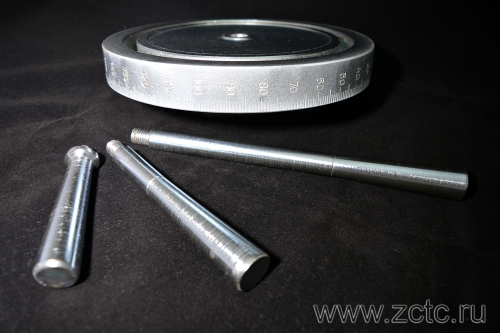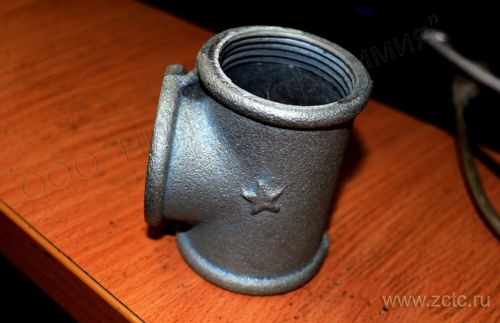COLORLESS GALVANIZING CAST IRON
Description
White galvanic galvanization is most often used to protect cast iron products from corrosion in light conditions operation (dry heated rooms). Cast iron parts are mainly produced by casting, so the quality of galvanization is highly dependent on the quality of the casting. If the casting skin is severely damaged, alkaline galvanizing may not be possible. The roughness of the original surface will negatively affect the gloss of the coating. In terms of protective ability, white galvanization is inferior to rainbow and olive. Depending on the required degree of protection of the metal surface (which is directly related to the class of environmental aggressiveness and the expected service life of the product), the thickness of the colorless galvanic zinc coating can range from 6 to 50 microns. Coatings with a thickness of 9 microns or more should be considered optimal, because a smaller thickness will not provide sufficient protective ability of the coating. The thickness of the chromite film is no more than 0.025-0.08 microns; it does not contain hexavalent chromium. The durability of white zinc without additional treatment with polymer compounds in 5% salt spray is 20-80 hours. The corrosion rate of non-passivated zinc depends on pH:

You can order white galvanizing of cast iron according to GOST 9.305-84 by phone and email indicated in the section "CONTACTS".
Characteristics
|
Designation (examples) |
Zn |
|
Thickness |
6-50 microns (greater thickness is possible) |
|
Microhardness |
490-1180 MPa |
|
Electrical resistivity at 18° C |
5.75⋅10-8 Ohm⋅m |
|
Permissible operating temperature |
300° C |
Advantages of galvanizing:
- Anodic to cast iron and protects it from corrosion electrochemically up to +70°; C, at higher temperatures - cathodically (mechanically). The anodic nature of the zinc coating protection allows it to protect cast iron products even if the coating is damaged (scratches, pores, chips).
- Prevents contact corrosion of cast iron when mating with parts made of aluminum and its alloys.
- Ensures easy screwing of parts.
- Increases the gloss level of parts (more than with galvanizing with chromating).
- Chromite colorless films do not contain toxic hexavalent chromium.
- Can be used to ensure electrical conductivity during crimping with plastics at temperatures above 100°C.
- Quite plastic.
Disadvantages of galvanizing:
- Chromite film on zinc is mechanically relatively weak. Zinc chromium-plated coating loses its decorative appearance under periodic mechanical stress.
- Electrochemical galvanizing causes some loss of ductility of cast iron due to hydrogenation (manifests itself more strongly than for steel).
- Has increased brittleness at temperatures above +250°; C and below -70° C.
- Has low chemical resistance to the effects of products released during the aging of organic materials.
- Colorless chromite film does not have the property of “self-healing”, i.e. is not able to restore its properties in case of minor mechanical damage, such as scratches, unlike chromate films.

Read also articles
Galvanizing mechanism
Description of the galvanic galvanizing process. Electrolytes.
Hydrogenation and removal of hydrogenation of steel after galvanizing
The problem of hydrogenation during galvanizing. How to dehydrate?

Do you want to become our client?
Just leave your request by filling out the form on the right and we will contact you as soon as possible. Thank you!

By submitting an application, you agree to processing of your personal data. Your data is protected.







